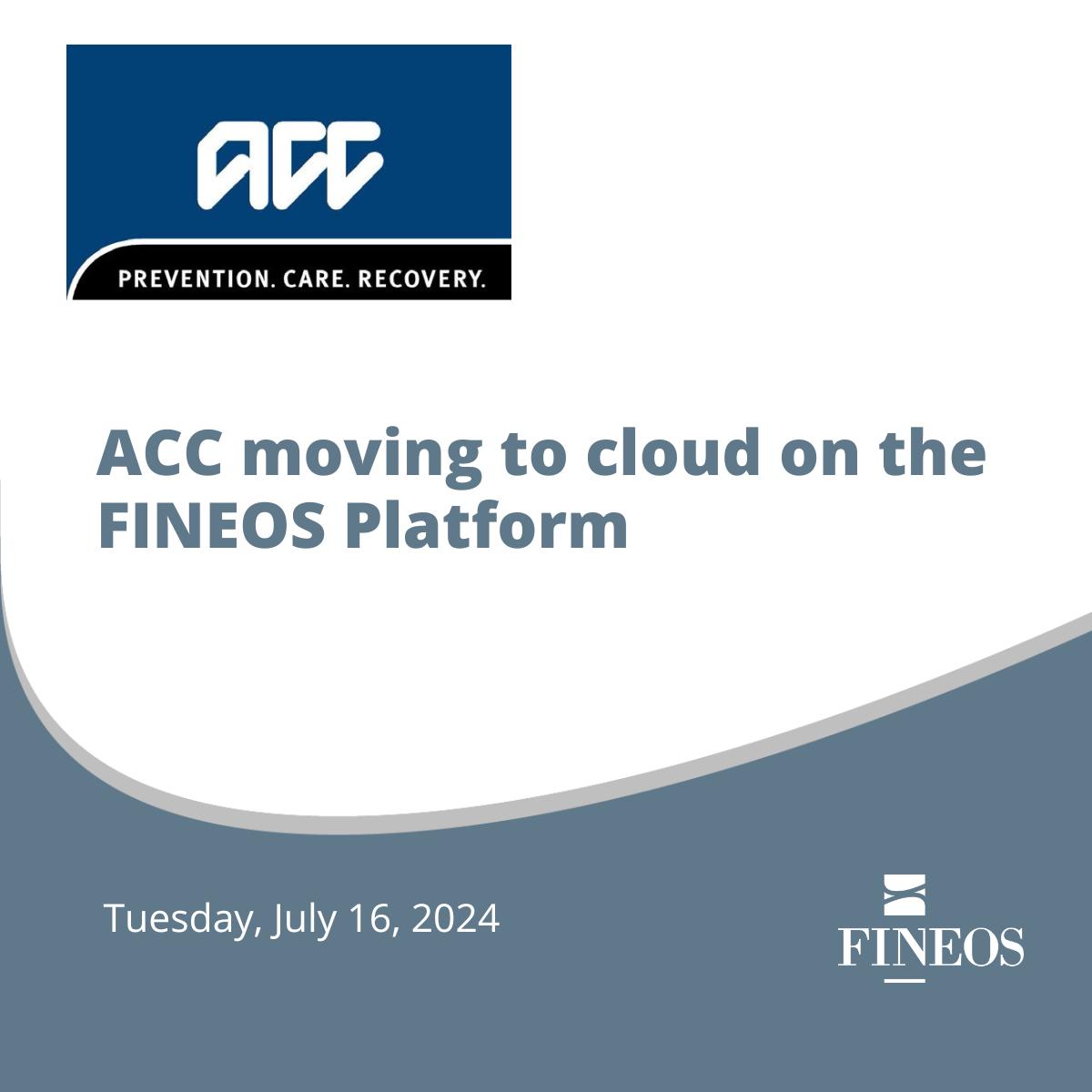Original article appeared in Insurance CIO Outlook April 2020
Dan Watt, VP Product Management, FINEOS discusses what insurance carriers are doing to remain competitive in this changing market when legacy systems are falling short.
Have you tried to order anything from Ikea lately? If so, you might have had a negative experience like those of other shoppers around the world. Purchasing an item only for the order to be canceled weeks later, frustration over out of stock items, or driving to pick up your purchase and discovering it’s unavailable when you arrive.
These poor customer experiences are all due to the company’s failure to modernize its e-commerce capabilities both prior to, and in the wake of, the COVID-19 pandemic. In the insurance industry, a similar lack of modernization is contributing to loss of revenue and subpar customer experiences.
Outdated legacy systems cause insurance carriers to unknowingly “leak” premium they should be collecting, and ultimately impact their ability to provide a modern digital experience for their customers. So, what can carriers do to combat this? It’s as simple as understanding why legacy systems are such a hinderance, and what solutions should be implemented to solve the problem.
Why are Legacy Systems an Issue?
Many insurance carriers have relied on legacy systems (i.e. Excel, COBOL, or VB6) for decades. Because these systems are highly trusted and enable many non-standard, but accepted processes required by clients, it can be difficult for carriers to identify exactly where legacy systems fall short. Unfortunately, their lack of robust modern core solutions and inability to provide consumer expected digital capabilities makes them the culprit of many major pain points for insurance carriers.
Legacy systems lack the ability to share data seamlessly and efficiently across the organization, integrate both internally and with ecosystem solutions, and automate rules and regulations. This means they’re causing issues for carriers such as siloed workflows, multi-entry, inaccurate data, and manual errors, all of which result in redundant processes and slow turnaround times.
In addition to lacking efficiency, the continued use of legacy systems has a significant impact on a carrier’s bottom line. According to a recent FINEOS survey, an estimated 5-10% of insurance premiums vanish every year due to the inefficiencies caused by legacy systems. To identify premium leakage, carriers can look to a couple common sources.
Around 5% of annual premium can be lost just from case setup inaccuracies when installing new employer groups on multiple systems that are not integrated. Even more revenue can be lost from using legacy systems which are ill-equipped for enrollment and eligibility management, potentially costing carriers millions of dollars in valuable premium and/or claim cost they should not have incurred.
How to Stop Premium Leakage
Insurance carriers using legacy systems will have to rethink their core system solutions if they want to tackle premium leakage.
Legacy systems are inherently prone to premium leakage, so they need to be replaced or integrated with strong, modern core systems.
However, a modern core solution is nota silver bullet alone. The solution should be built for purpose, meaning, the solution should be designed from the ground up to support the industry. Why is this important? The success of implementing the new solution and integrating it with the existing internal ecosystem will be dependent upon whether the platform selected is built specifically for the business.
Additionally, the core system solution should be cloud-based in order to allow data to flow freely between the carrier and the employer. This enables the insurance carrier to be a reliable source of truth for current plan and policy information, as well as member data for the employer.
Having stronger core systems in place means premium calculations for both the employer and the carrier are based on that same source of truth. This improves accuracy and facilitates faster processing times. Further, when an employee is enrolling for coverage, their benefits and provisions will be accurate and give a clearer picture of their eligibility.
This results in the correct amount of premium being billed to the insured, and zero premium leakage. Even more importantly, this also ensures the right benefits will be paid when they’re needed. Everyone wins when the customer has a better experience, and the carrier is able to add more money back toward their bottom line.
Now is the Time for Digital Transformation
Prior to the start of the COVID-19 pandemic in 2020, we expected digital transformation within the insurance industry to continue at the same pace as in 2019. But rapidly changing employee benefits expectations and the urgent need for remote functionality due to the pandemic changed everything.
Advanced digital capabilities from employee benefits carriers are now in high demand. In fact, Guardian Life recently reported that 34% of employers would recommend switching to a leading carrier with real-time member transactions for nonmedical group benefits.
Carriers looking to remain competitive in this changing market will have to modernize in order to keep up with evolving customer expectations. They can do this by investing in dynamic core solutions that provide an integrated digital experience on both the carrier and employer side.
Demand will only continue to increase this year for more product options, greater customer centricity, and better remote customer experiences. In order to be future-ready, the time for insurance carriers to prioritize digital transformation is now. That means taking a hard look at the downside to their legacy systems and making the decision to modernize with a purpose-built solution.
See Dan’s recent blog: Does your core have the strength to address $10M in premium leakage a year?


